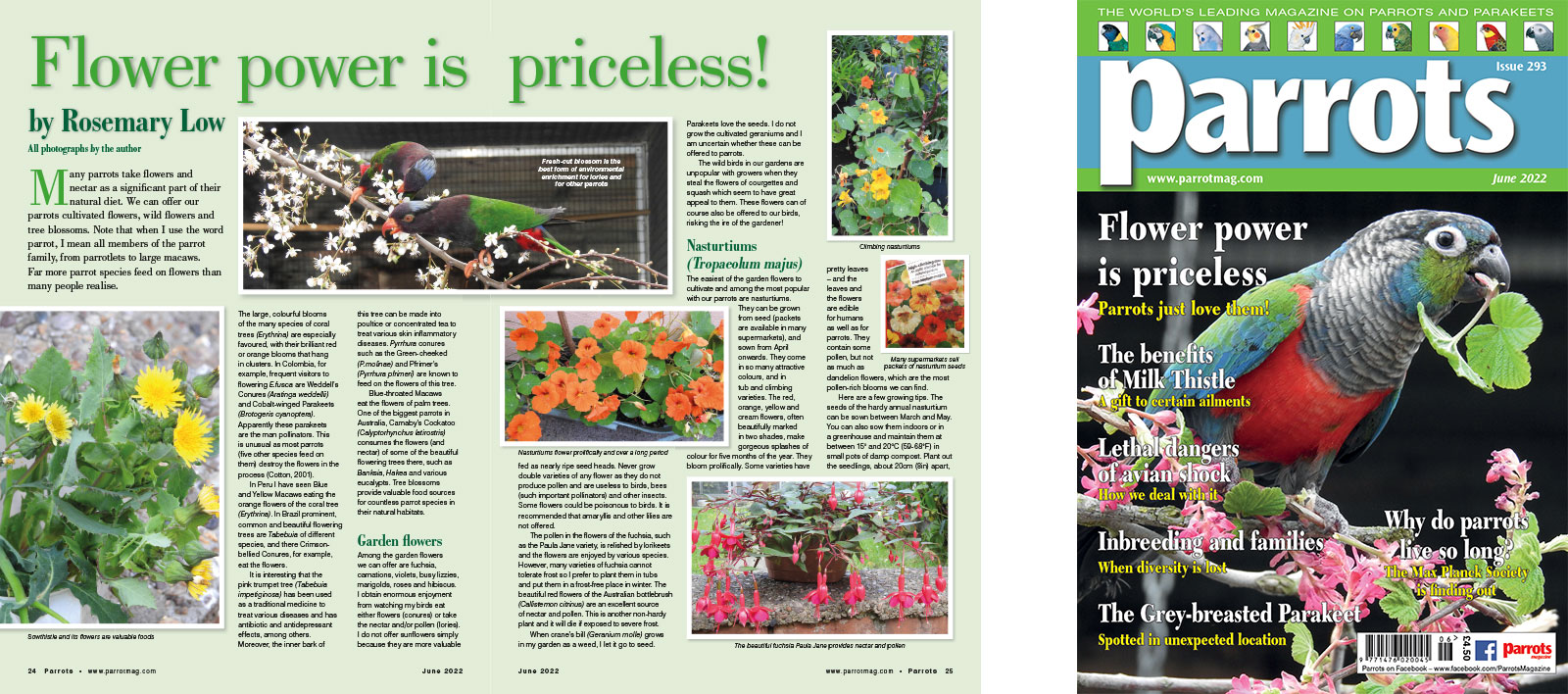
By Rosemary Low
Many parrots take flowers and nectar as a significant part of their natural diet. We can offer our parrots cultivated flowers, wild flowers and tree blossoms. Note that when I use the word parrot, I mean all members of the parrot family, from parrotlets to large macaws. Far more parrot species feed on flowers than many people realise.
The large, colourful blooms of the many species of coral trees (Erythrina) are especially favoured, with their brilliant red or orange blooms that hang in clusters. In Colombia, for example, frequent visitors to flowering E.fusca are Weddell’s Conures (Aratinga weddellii) and Cobalt-winged Parakeets (Brotogeris cyanoptera). Apparently these parakeets are the man pollinators. This is unusual as most parrots (five other species feed on them) destroy the flowers in the process (Cotton, 2001).
In Peru I have seen Blue and Yellow Macaws eating the orange flowers of the coral tree (Erythrina). In Brazil prominent, common and beautiful flowering trees are Tabebuia of different species, and there Crimson-bellied Conures, for example, eat the flowers.








Parrot Chat
Buyers Guides
Breeding articles